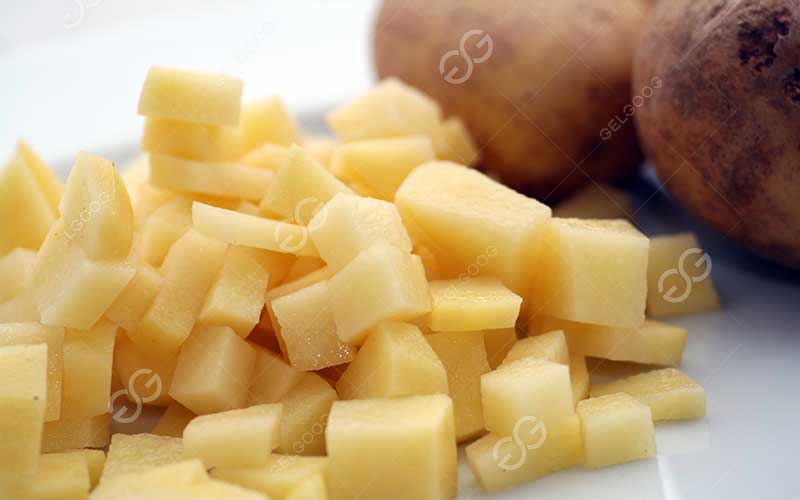Potato cube are a very common ingredient in food processing, frequently found in vegetable salads, frozen mixed vegetable packs, and ready-to-eat foods. To meet the demands of large-scale production, many potato processing plants process fresh potatoes into standardized potato cube products, package them, and supply them to restaurants, hotels, and frozen food companies. So, how to cube cut potatoes?

In food processing plants, most companies use automated potato dicing machines to produce potatoes with high uniformity. This equipment can quickly and accurately cut large quantities of potatoes into uniformly sized cubes, which are then used in frozen foods, central kitchens, and other applications.
Working principle
An automatic cube cutting machine typically consists of a feeding system, a cutting system, and a discharging system.
Feeding section: Washed and peeled potatoes are fed into the machine.
Cutting section: A combination of three sets of blades sequentially completes the process of “Slicing—stripping—dicing.” The potatoes are diced after passing through the vertical and horizontal blade sets.
Adjustable dicing size: The blade spacing can be adjusted according to customer needs to achieve different dicing sizes, such as:
- 5×5mm, 8×8mm – commonly used for frozen mixed vegetables and salads.
- 10×10mm – commonly used for frozen semi-finished foods.
- 12×12mm, 15×15mm – commonly used for canned potatoes or pre-cooked dishes.
Advantages of automatic potato cube cutting:
- High efficiency: Processes hundreds of kilograms to several tons of potatoes per hour, far exceeding manual processing.
- Neat cuts: Sharp blades and uniform rotation speed result in clean, even cuts that are less prone to breakage or deformation.
- High consistency: All potato cubes are of uniform size, facilitating standardized processing such as blanching and quick-freezing.
- Hygiene and safety: The all-stainless steel body design meets food safety standards and is easy to clean and maintain.
Of course, cube cutting is only one step in potato processing. Depending on different processing requirements, other steps such as washing, peeling, and blanching may also be necessary.
